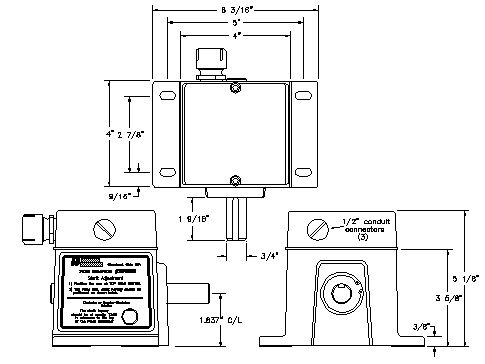
Revised: January 31, 2012

| PG Terminal | Description | Wire Color | 2TB (4000) |
| 1 | +12Vdc. | Black | 1 |
| 2 | Ground | White | 2 |
| No connection | Shield | Bare wire | 2 |
| 3 | "A" Pulse | Red | 3 |
| 4 | "B" Pulse | Green | 4 |
| 5 | Topstop sync | Blue | 5 |
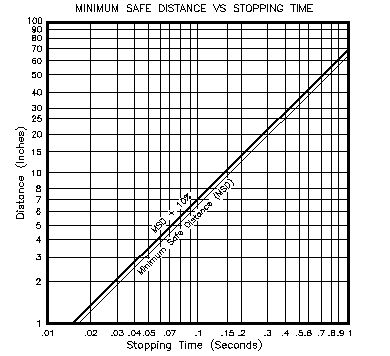
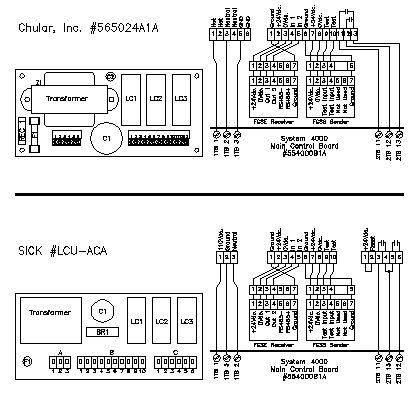
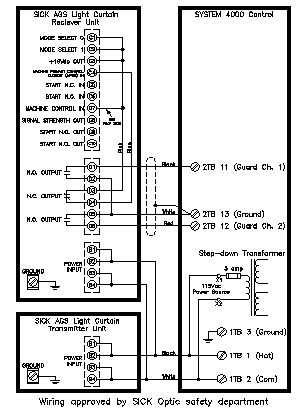
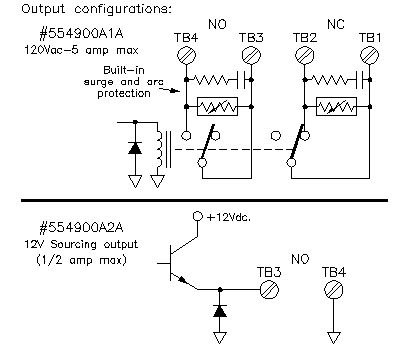
| NOTE: If the "Stop" position is selected on a particular channel, and its sensor remains closed indefinitely, the control will not reset (the fault LED and light will remain lit and operation inhibited) until the sensor is opened. |
Some typical connections to
the Die Monitor Board are shown on the Interconnection Drawing #B554950A1
in the back of this manual.
| Main Control Board "B" version | #554000B1A |
| Main Control Board "D1" version - March 2000 | #554000D1A |
| Main Control Board "E1" version - March 2001 | #554000E1A |
| Main Control Board "E2" version (with 20 pin RC connector) | #554000E2A |
| Door Interface Board "A" version | #550260A2A |
| Door Interface Board "C1" version - March 2000 | #554260C1A |
| Door Interface Board "C2" version (with 20 pin RC connector) | #554260C2A |
| Pulse Generator Board (for Pulse Generator Assm #550750A2) | #550700B2A |
| Pulse Generator Board (for Pulse Generator Assm #550750B2) | #550700B3A |
| Multiple Operator Station Interface Bd. | #554850A1A |
| Multiple Operator Station Interface Bd. (20 pin RC connector) | #554850A2A |
| Minimum Safe Distance/Stop Time Readout Board | #554700A1A |
| 6-Channel Die Monitor Board | #554950A1A |
| Die Monitor Remote Indicator Board | #554955A1A |
| Crank Position Readout Board | #554800A1A |
| Auxiliary Cam Board (Dry output contact - 120Vac) | #554900C1A |
| Auxiliary Cam Board (Solid state - 12Vdc out) | #554900C2A |
| Auxiliary Cam Board (120Vac) (with 20 pin RC connector) | #554900D1A |
| Auxiliary Cam Board (Solid state) (with 20 pin RC connector) | #554900D2A |
| Auxiliary Cam Power Supply Bd. (for remote cam placement) | #552650A1A |
| External Cam Adjustment Board (for remote front panel adj.) | #551275A1A |
| REL 1 – Motor Control Relay ("B" version) 12Vdc coil | #500109A1 |
| REL 2 – Motor Forward Relay ("B" version) 120Vac coil | #500245A2 |
| Relay hold-down strap (for REL 1 and REL 2 above) | #500912A1 |
| MOD 1, 3, 4 – Motor Control/Clutch Output ("D" version) | #500249A1 |
| MOD 2 – Motor Forward Input ("D" version) | #500248A1 |
| F1 – Time-delay fuse, 4 amp "120Vac" | #501201A4 |
| F2 – Time-delay fuse, ¼ amp, "12Vdc Power Supply" | #501201A1 |
| F3 – Quick-blow fuse, 1 amp, "Clutch Output" ("B" version) | #500012A4 |
| Indicator light bulb, 14.4V, #1813 | #262651A1 |
| Indicator light cover, green (POWER ON, GUARD) | #501774A3 |
| Indicator light cover, amber (MOTOR ON, CLUTCH ENG.) | #501774A2 |
| Indicator light cover, red (Brake/Motion FAULT) | #501774A4 |
| Logic-reed contact block, N.O. and N.C. | #800TXAR |
| Logic-reed contact block, N.O. | #800TXD1R |
| Logic-reed contact block, N.C. | #800TXD2R |
| Button mushroom cap, yellow (for ARMING/TOPSTOP) | #800TN246Y |
| Button jumbo mushroom cap, green (for RUN button) | #800TN247G |
| Button jumbo mushroom cap, red (for EMERGENCY STOP) | #800TN247R |
| Standoff, #6-32 x ¾" (Main Control, Aux. Cam Boards) | #500876A5 |
| Standoff, #6-32 x 1 ½" (Door Interface Board) | #500876A12 |
| 1TB – Wire terminal plug, 12 position | #1754643 |
| 2TB – Wire terminal plug, 16 position ("B" version) | #1754724 |
| 2TB – Wire terminal plug, 18 position ("D" version) | #1754766 |
| Pulse Generator Assembly, with 15' cable ("A2" version) | #550750A2 |
| Pulse Generator Assembly, with 15' cable ("B2" version) | #550750B2 |
| Single Operator Station Assembly, with standard RUN buttons | #555010A1 |
| Single Operator Station Assembly, with Opto-touch RUN buttons | #555014A1 |
| Multiple Operator Station Assembly, with keyed ON/OFF selector and light (requires the Multiple Operator Station Interface Board #554850A1A) |
#555011A1 |
| Main Control Board component layout ("B" version) | #B554100B1 |
| Main Control Board component layout ("D" or "E" version) | #B554100D1 |
| 2TB (12Vdc) with standard RUN buttons interconnection | #B554400D1 |
| 2TB (12Vdc) with Opto-touch RUN buttons interconnection | #B554400D2 |
| Multiple Press Operator Stations/Multiple Guards Interface | #B554851A1 |
| 1TB (120Vac) non-reversing motor control interconnection | #B554500C1 |
| 1TB (120Vac) reversing, slide adjust interconnection | #B554500C2 |
| 1TB (120Vac) reversing, slide adjust, and lube interconnection | #B554500C5 |
| 1TB (120Vac) reversing, speed adjust, and lube interconnection | #B554500C8 |
| Standard Door Interface 1PL Connections (Prewired at Brandes) | #B554600C1 |
| Die Monitor Board Typical Connections | #B554950A1 |
| Flywheel brake interface to the SYSTEM 4000 | #B576000C1 |
| Safety circuit interface for feed-trip auto-cycling ("B" version) | #B554440C1 |
| Progressive die-advance/feed detector sensor interface | #B554450C1 |
| Front guarding active in ALL press modes ("B" version) | #B554465C1 |
| BAR button installation drawing (typical) | #B554470C1 |
| Press-Brake/Stamping Press operation without guarding | #B594100C1 |
| Press-Brake/Stamping Press operation with guarding | #B594200C1 |
H&W CONTROLS